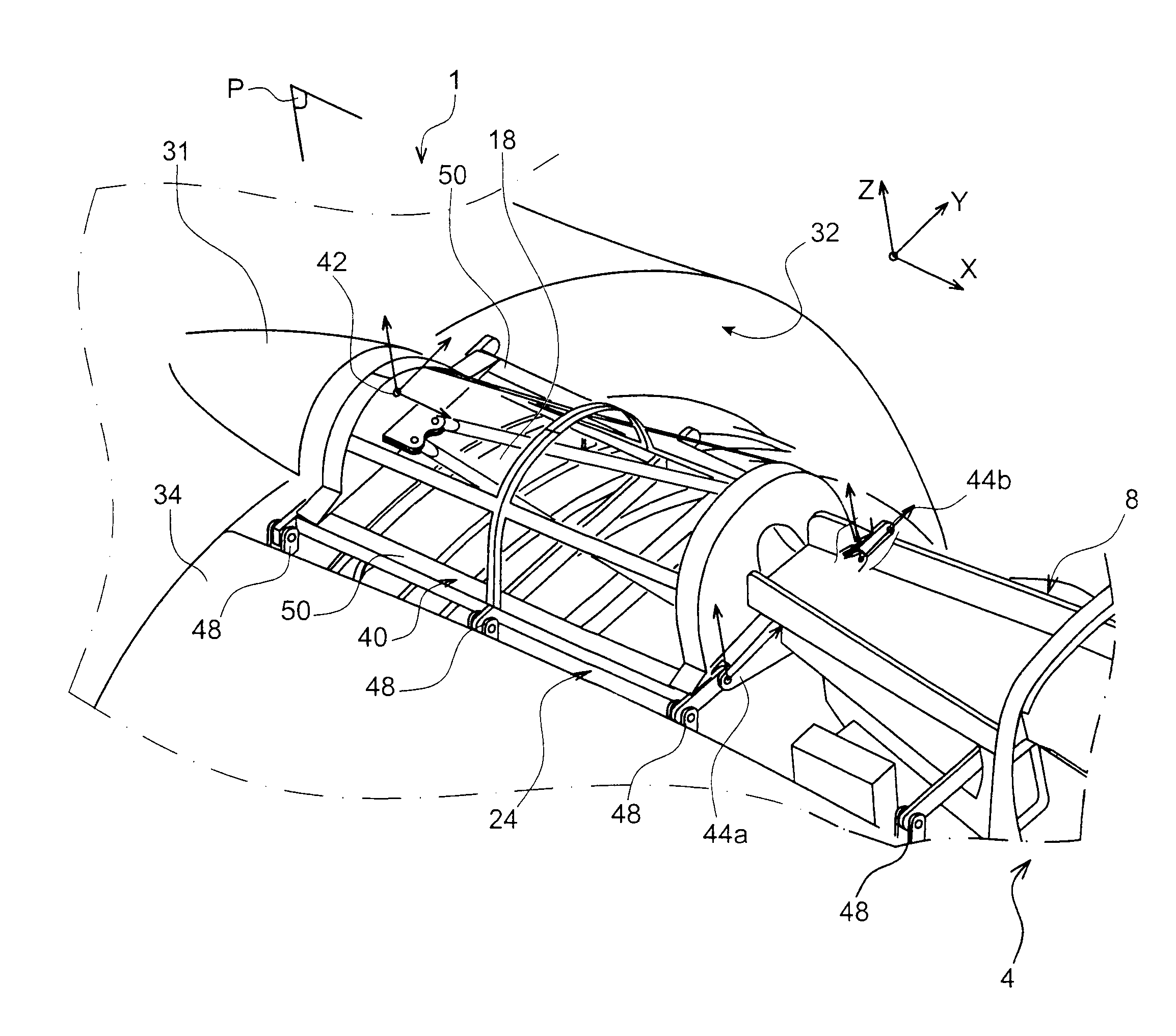Fan cowl support cradle mounted on the attachment pylon and on the air inlet of the nacelle
a technology of fan cowl and support cradle, which is applied in the direction of aircraft power plants, power plant construction, power plant types, etc., can solve the problems of affecting the overall performance of the aircraft, and affecting the global geometry of the unit, so as to reduce the space required and reduce the effect of aerodynamics
- Summary
- Abstract
- Description
- Claims
- Application Information
AI Technical Summary
Benefits of technology
Problems solved by technology
Method used
Image
Examples
Embodiment Construction
[0048]In reference first of all to FIGS. 1 and 2, an engine unit 1 for aircraft is shown intended to be fixed under a wing of this aircraft (not shown), this unit 1 comprising a device for hooking 4, an engine 6 such as a jet engine fastened under this device 4, and a nacelle 3 of which only the front portion has been shown in FIG. 1.
[0049]In all the description which shall follow, by convention, X shall refer to the longitudinal direction of the device 4 which is also similar to the longitudinal direction of the jet engine 6, this direction X being parallel to a longitudinal axis 5 of this jet engine 6. On the other hand, Y refers to the direction directed transversally in relation to device 4 and also similar to the transversal direction of the jet engine 6, and Z the vertical direction or of the height, these three directions X, Y and Z being orthogonal to each other.
[0050]On the other hand, the terms “front” and “rear” are to be considered in relation to a forward direction of t...
PUM
 Login to View More
Login to View More Abstract
Description
Claims
Application Information
 Login to View More
Login to View More - R&D
- Intellectual Property
- Life Sciences
- Materials
- Tech Scout
- Unparalleled Data Quality
- Higher Quality Content
- 60% Fewer Hallucinations
Browse by: Latest US Patents, China's latest patents, Technical Efficacy Thesaurus, Application Domain, Technology Topic, Popular Technical Reports.
© 2025 PatSnap. All rights reserved.Legal|Privacy policy|Modern Slavery Act Transparency Statement|Sitemap|About US| Contact US: help@patsnap.com



